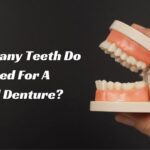Fibrosis may arise after surgery or skin incision; it is rather prevalent (depending on your skin type). In the case of a facelift, it typically shows up close to the incision sites. A variety of factors can bring it on. It can be treated in several ways. Let’s examine every aspect of fibrosis after facelift!
Fibrosis: What is it?
The skin may develop adhesions and scars from any form of surgery as it heals. However, the body can boost production unnaturally. Fibroblast, the primary connective tissue cell in the body, is found as bands that link two or more tissues and harden the skin underneath.
To put it another way, fibrosis is a collection of flaws that develop after cosmetic surgery. They are described as painful, hard lumps under the skin in the areas where cosmetic surgery has been performed.
Why does fibrosis occur?

1. Fat Necrosis
In the regions where the cannula was inserted, non-vascularized fat (outside adipocytes) that wasn’t removed may collect. This causes the fat to deteriorate and create fibrosis before being eventually eliminated by macrophages, specialist cells responsible for detecting, phagocytosing, and removing bacteria and other dangerous organisms.
2. Skin Condition
Your likelihood of developing fibrosis may be less or greater depending on your skin type and how it heals.
3. Poor diet
Fibrosis may result from a lack of vitamins, proteins, and minerals. Poor nutrition can impede wound strength and delay healing. It can also occur before or during the healing process.
4. Smoking
An appropriate balance of inflammation is necessary for wound healing and scar formation. Smoking is known to increase the risk of postoperative wound problems. This is likely due to smoking’s disruption of normal inflammatory physiology. In other words, smoking can cause fibrosis, so your surgeon requests that you give up the habit at least one month before the treatment and throughout the healing period.
5. Collagen Accumulation
Following liposuction, collagen fibers displaced by the cannula’s aspiration may also collect in addition to fat. It will, therefore, aid in the development of fibrous regions.
6. Insufficient Vein Supply
Because nutrients and oxygen cannot reach the mending tissues, poor blood flow causes fibrosis. Lack of nutrition results in cell death, harming the tissue and leading to fibrosis or forming a fresh wound.
What symptoms might indicate fibrosis?
Fibrosis signs include:
Pain
It is typical to experience discomfort following surgery, but it will subside within two or three weeks. However, note if the pain persists after treatment, disappears for a while, reappears, or if you also experience muscle strain there. Those are symptoms of fibrosis.
Lumps
After the inflammation has subsided (1 month following the treatment), lumps may indicate fibrosis.
Pigmentation
Red skin patches after the procedure are standard, but if they persist or get more prominent, this might be a fibrosis symptom.
What are the fibrosis risk factors?
Some risk elements include:
- How big your scar is. There are more opportunities for fibrous tissue to grow when the scar is large.
- Genetics. Some people are predisposed to fibrosis; even small incisions can result in large scars (keloids).
- Absence of motion. The risk of fibrosis rises with prolonged sitting.
After surgery, remember to move for five minutes every hour and then gradually increase your activity as you feel better.
- Unsuitable clothing and compression.
After surgery, remember to move for five minutes every hour and then gradually increase your activity as you feel better.
- Unsuitable clothing and compression.
Diagnosis of fibrosis after facelift


A physical examination of the treated region can identify fibrosis following a facelift. To determine the degree of fibrosis, your doctor may also order imaging tests such as an MRI or ultrasound.
Treatment for fibrosis after facelift
Fibrosis following a facelift can be treated in several ways, including:
1. Massage Therapy
Using manual massage techniques, the fibrous tissue in the afflicted area can be broken down, and the blood flow can be improved. Massages for lymphatic drainage are sometimes helpful following a facelift, while they are not always essential for problems like fibrosis.
2. Compression Therapy
Supporting the treated region while preventing the growth of new fibrous tissue is provided by compression garments.
3. Radiofrequency Therapy
The underlying tissues may be heated, and the fibrous tissue can be broken down using RF energy waves.
4. Laser Therapy
Laser radiation may also disintegrate fibrous tissue and support the formation of collagen, which helps smooth the skin’s surface.
5. Surgery
Surgery may be required to remove the fibrous tissue and restore a smooth skin surface in extreme instances. If earlier non-surgical therapies cannot smooth fibrosis-induced lumps properly, revision facelift procedures may be necessary.
In some cases, scar revision surgery is also done.
Options for Scar Revision Treatment
After an accident or surgery, your body creates scars to replace missing or damaged skin. But scars can frequently be uncomfortable, unpleasant, tight, or thick, restricting your range of motion. At that point, scar revision therapy might be beneficial.
Revision therapy can lessen discomfort, make the surrounding skin softer and more elastic, and enhance the look of a scar.
Alternative treatments for fibrosis after facelift
In addition to the above-mentioned conventional treatments, several complementary therapies might help lessen fibrosis after a facelift. These consist of:
1. Acupuncture
This procedure includes inserting tiny needles into predetermined body locations to increase circulation and decrease inflammation.
2. Herbal treatments
Arnica and bromelain are two herbs that may assist in reducing edema and inflammation in the treated region.
3. Topical creams
Some creams may aid in moisturizing the skin since they include chemicals like vitamin E, aloe vera, and hyaluronic acid. This may lessen the fibrosis’ visual impact.
It’s critical to speak with your doctor before beginning any treatment. Some might not be appropriate for everyone and might interact with other drugs.
How do you avoid fibrosis after a facelift?
The most straightforward approach to avoiding fibrosis after a facelift is strictly adhering to your doctor’s postoperative recommendations. This can entail wearing compression clothing, refraining from physically demanding activities, and keeping the treated region dry and clean.
Regardless of the surgery, selecting a trained, experienced surgeon who employs safe and efficient facelift procedures is crucial. By choosing the least expensive therapy, do not attempt to save money. You could pay extra as a result of further editing processes or massages.
Are there any medications to prevent fibrosis?
No drugs are on the market to stop the progression of or treat fibrosis. However, vitamins like A and C could help you lower your fibrosis risk.
Vitamin A
- promotes healing,
- controls how the stratum corneum, which is the epidermis’s outer layer, regenerates its cells.
- Enhances skin quality (softens it).
- It promotes the synthesis of collagen, which is necessary for wound healing.
Vitamin C
- Required for tissue expansion.
- All bodily components are fixed.
- Form a crucial protein that creates blood vessels, tendons, skin, and ligaments.
- Create scar tissue when they heal wounds.
- Repair and upkeep of teeth, bones, and cartilage.
Recovering after a facelift
Following your doctor’s advice is vital to guarantee a smooth recovery after a facelift. Recovering after a facelift might take many weeks. This can entail:
- using compression clothing
- taking painkillers
- staying away from physically demanding tasks
- keeping the treated area dry and clean.
When to get medical assistance for fibrosis?
Getting assistance as soon as possible is critical if you experience any odd symptoms, such as excruciating pain, fever, or extreme swelling. These can indicate an infection or other problems that need prompt attention.
Conclusion
In certain circumstances, fibrosis after facelift cannot be prevented or eradicated (depending on age, skin quality, surgical outcomes, etc.). Still, using MLD and other gadgets will be feasible to lessen discomfort and other symptoms and enhance the look. Remember that your surgeon will be able to help you better as they can plan a solution specific to your needs.









